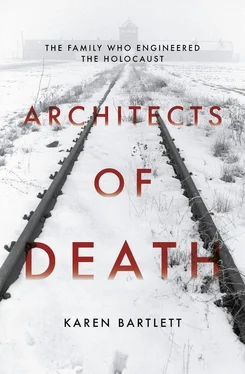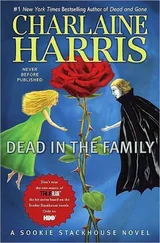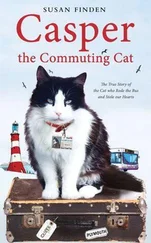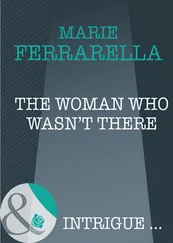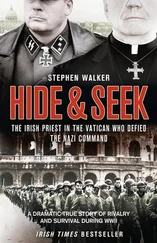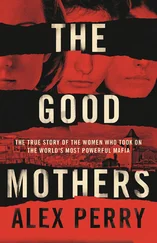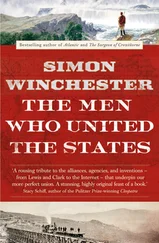However, nothing could be proven against me. At work, too, I suffered a great deal of nastiness from my colleagues.
In 1943, my father was imprisoned in the Auschwitz concentration camp, where he must have died shortly after his arrival. My father’s prisoner number was: 119684. My mother had died of a stroke in 1942, a result of all the stress.
In 1944, the Gestapo put me in a forced labour camp near Suhl, where, along with numerous other half-Jews from Erfurt, I was made to do extremely hard labour in a stone quarry. After the Allied troops liberated the camp, I returned to Erfurt.
Immediately after my return I returned to my previous company. I was one of the staff elected to the works council, and later I was appointed sequestrator of the Topf and Sons Machine Factory in Erfurt. Following the lifting of the sequestration, I worked there as departmental manager and am now head bookkeeper.
I swear on oath that the above details are true.
Erfurt, 13 October 1949
[12] Willy Wiemokli letter and CV post war, Landesarchiv Thüringen - Hauptstaatsarchiv Weimar.
Not only did Ernst Wolfgang Topf protect Wiemokli from the Gestapo, he also protected him from other opponents within Topf and Sons, going as far as to sack four members of the accounts department who had denounced him. Wiemokli’s particular nemesis was Wilhelm Behnke, a colleague in the same department and an ardent Nazi, who reported Wiemokli to the Gestapo for breaking the Race Laws and having a relationship with a non-Jewish woman at work. ‘Herr Topf protected me in every respect and in some cases even sacked people who tried to act against me,’ Wiemokli noted. Wiemokli was arrested and released three times on suspicion of breaking the Race Laws between 1939 and 1944 (he was, in fact, in a secret relationship with Erika Glass for the entire duration, and married her in September 1945). On each occasion Ernst Wolfgang came to his aid, even, according to Topf’s secretary Ingeborg Prior, intervening to stop Wiemokli being called up for forced labour.
After the war, Ernst Wolfgang would claim that he had himself been denounced to the Gestapo for his actions in defence of Wiemokli, a claim impossible to verify as Gestapo files were destroyed after the war. Yet, while some of Ernst Wolfgang’s actions were self-serving (he may have wanted to sack Behnke and the others for his own reasons), there is no doubt that he defended Wiemokli to the best of his ability, and also tried to help another half-Jewish employee, Hans Fels, who was a commercial apprentice. Fels later recalled that Ernst Wolfgang had intervened with all possible offices to stop his call-up for forced labour in the autumn of 1944.
Wiemokli’s gratitude seems even more mystifying when we learn that not only did he experience the horrors of Buchenwald himself – but that his father died at Auschwitz, and therefore almost certainly ended up being incinerated in a Topf oven.
Topf and Sons not only provided protection for a small number of employees vulnerable to persecution under the Race Laws, it also sheltered a number of political opponents of the Nazi regime, including communists.
One example was Georg Reinl, who was prepared to join Willy Wiemokli in making a post-war statement in defence of Ernst Wolfgang, claiming that Topf had employed him, protected him from the Gestapo and had been complicit in his determination never to manufacture so much as a screw or a rivet for ‘Hitler’s war’. Reinl was an engineer from the Sudetenland whose democratic views and ‘political unreliability’ had already led to him being imprisoned several times by the Nazis and sacked by defence companies Messerschmitt and Junkers. Yet, despite his lengthy record of dissent, Topf and Sons respected his wish not to take part in any military work, such as making aircraft parts, and employed him in the malting and grain storage construction division to work on grain conveyors – a protected ‘Uk’ position that meant that he was exempt from call-up to the army. Reinl stated that on several occasions Ernst Wolfgang had ‘protected [him] from the Gestapo, and from serious reprimands from the political shop steward,’ and also allowed Reinl to take an ‘illegal holiday’ to visit his father who was imprisoned by the Gestapo in the Sudetenland.
As well as acting as a haven for a small number of those persecuted by the Nazis, Topf and Sons was also a hotbed of communist resistance – with a strong network of highly organised communist workers, many of whom had been imprisoned and then released from concentration camps. One worker and KPD (German Communist Party) member, Bernhard Bredehorn, claimed the reason for this was that Topf and Sons undertook no armaments work so metal workers from concentration camps could be sent there without fear that they would steal or sabotage arms work. Another reason, later offered up by one of Bredehorn’s comrades, was that the Gestapo sent political prisoners to Topf and Sons because the hard work they endured at the company tired them out and kept them under control.
Whatever the reason, the communist workers would later claim that, once there, they immediately banded together and operated as an active political resistance throughout the war. Bernhard Bredehorn was an Erfurt native and former employee of the town’s shoe industry who had spent a year and a half incarcerated in various concentration camps before retraining as a welder and joining Topf and Sons. In the 1950s, Bredehorn described how he had worked with well-known communist resistance figures during his time at Topf and Sons. Among these were Hermann Jahn, who became the first mayor of Erfurt when the city was part of East Germany, as well as Magnus Poser, who died in Buchenwald in 1944, and Theodor Neubauer, who was executed by the Nazis in 1945.
‘Throughout the entire Nazi regime I always maintained contact with known Erfurt comrades and stayed in constant touch with them… Since the top priority was the organisation of steadfast political cadres, I was given the task of building up the organisation in the company again.’ [13] Bernhard Bredehorn’s statement, Landesarchiv Thüringen - Hauptstaatsarchiv Weimar.
Bredehorn goes on to describe how this ‘illegal factory cell’ at Topf and Sons distributed pamphlets to forced workers and prisoners of war in the company and smuggled Soviet forced labourers into the homes of communist sympathisers so that they could listen to banned radio broadcasts from the Soviet Union.
There was also some suggestion that communist leader Hermann Jahn was also employed at Topf and Sons during this time, working directly with Heinrich Messing who was the ventilation mechanic for the gas chambers at Auschwitz.
These statements, however, must also be examined in the context of workers trying to impress their new post-war socialist masters with their own resistance credentials. Historian, Ronald Hirte from Buchenwald Memorial believes that communists were sent to Topf and Sons as the SS considered the company completely reliable, and knew that the resistance there posed very little threat.
There was a communist resistance at Topf and Sons, but there was also communist resistance even within Buchenwald camp itself. No action was taken against it because it was known that it posed no real threat. In the case of Topf and Sons there is little evidence about what real actions the resistance there ever undertook.
Speaking after the war, when Erfurt was in the Soviet occupation zone and then part of the German Democratic Republic (East Germany), none of the communist workers from Topf and Sons referred to a personal relationship with either of the Topf brothers (they remained the ‘enemies’ in the class struggle), but company records show that all of the communist employees of Topf and Sons, with the exception of two, were kept on the list of ‘Uk’ protected workers.
Читать дальше
